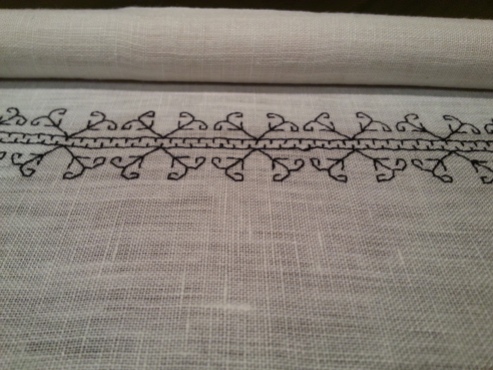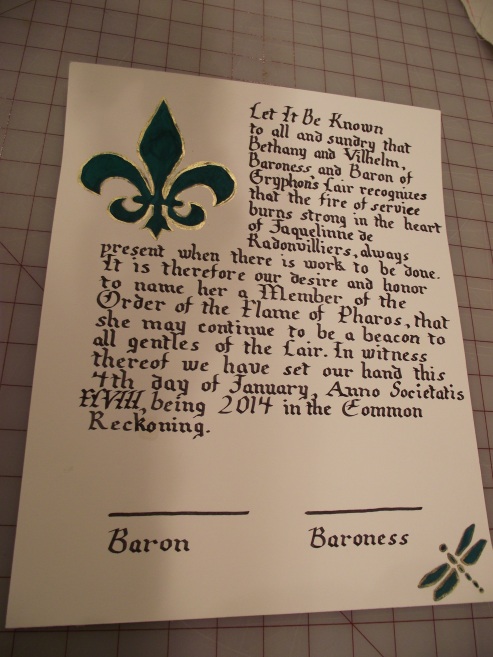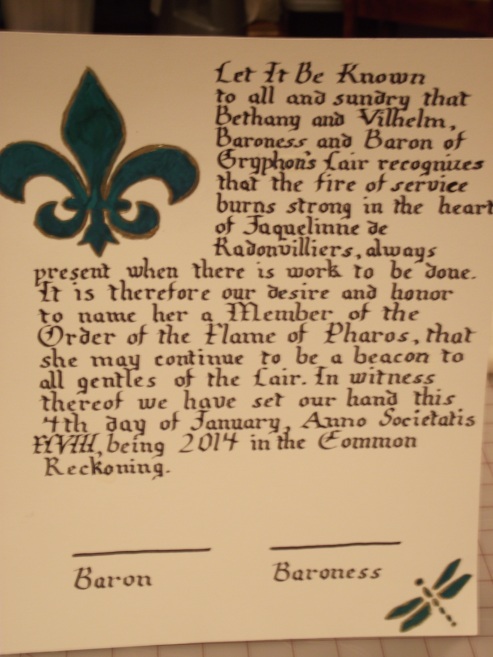
We all have that one friend that you should never wager against because luck will always favor them. I have that in my friend Braden. Two years of unsuccessful wagering led to my making him a handsewn and blackwork embroidered 16th century shirt.
Materials Used: 5.3 oz white linen for the body of the shirt, 3.2 oz white linen for the embroidered cuffs and collar, black silk embroidery floss, 25 count waste canvas, wooden scroll embroidery frame, serger, sewing machine
I prefer to make my art as period correct as I possibly can, so I chose to use a design drafted from the Hans Holbein portrait of Henry VIII. The embroidery can be seen at the joining of the seams on Henry VIII’s shirt. I serged the edges of the linen, loaded the scroll embroidery frame, and spent about 100 hours or so embroidering the blackwork design on the cuffs and collar.
Once the embroidery was complete I used Braden’s measurements to cut out the body pieces and sleeves for the shirt from the 5.3 oz linen. I serged the edges of each piece to keep the linen from fraying and then used my sewing machine to sew the front 2 pieces of the shirt to the back piece, and to attach the sleeves. All other sewing was completed by hand. Because of the thickness of the linen I chose to fold each side of the seam onto itself and hand sewed them flat.
Once the shirt was assembled, I box pleated the fabric for the collar and cuffs. I used the sewing machine to attach the pleating to the embroidered pieces and then hand sewed the cuffs and collar on to the shirt.
After attaching the cuffs and collar, and flat felling all of the body seams, I attached hook and eyes to the collar and cuffs and then hand sewed the shirt hem. It was finally complete!
But of course this is where problems always happen. The shirt fit beautifully with the exception of the collar, which was about one inch too short. Thank goodness I ensured that there was extra material on the ends of the collar. I loosened some of the gathering in the collar and extended it to the needed length. My friend was very happy with the shirt and even wore it at the SCA 50 Year celebration.





























